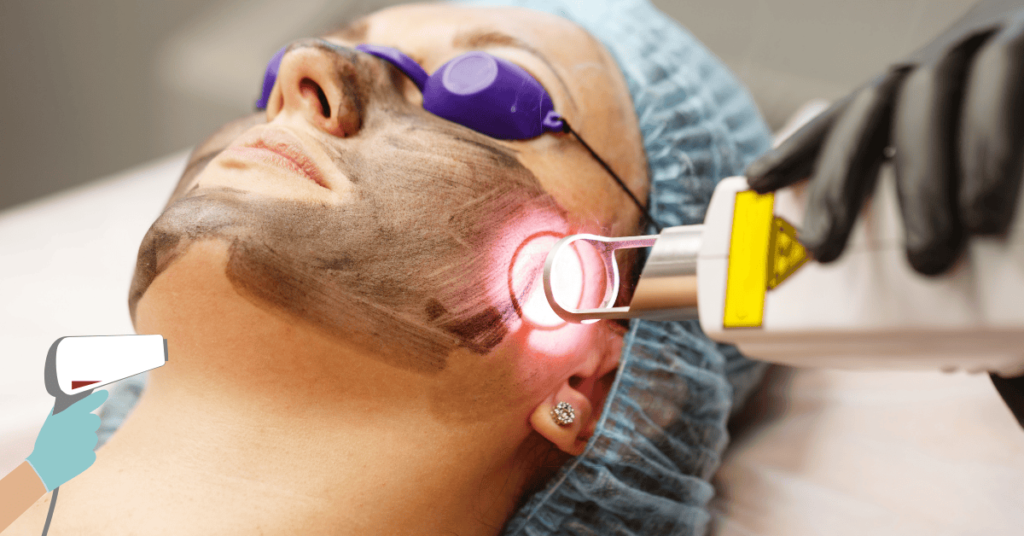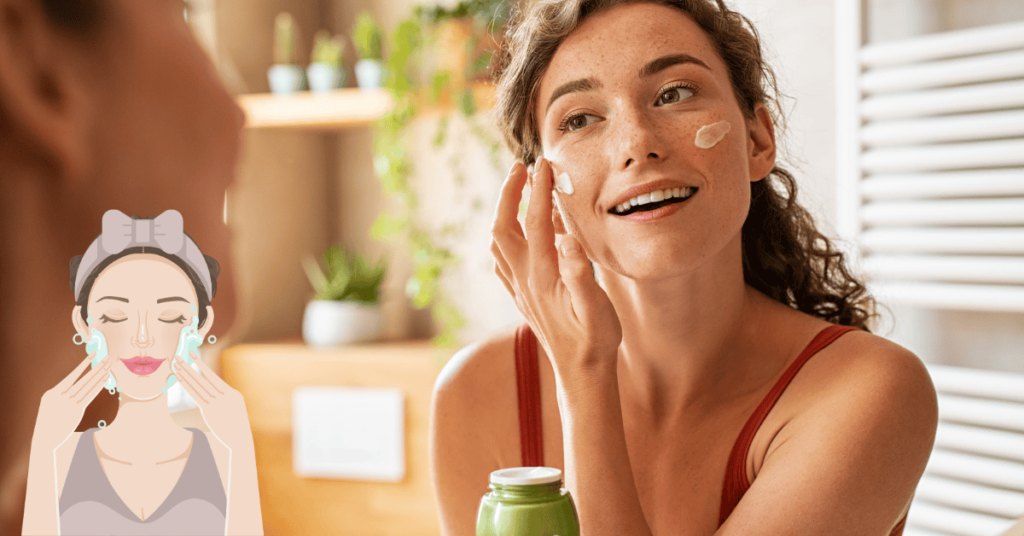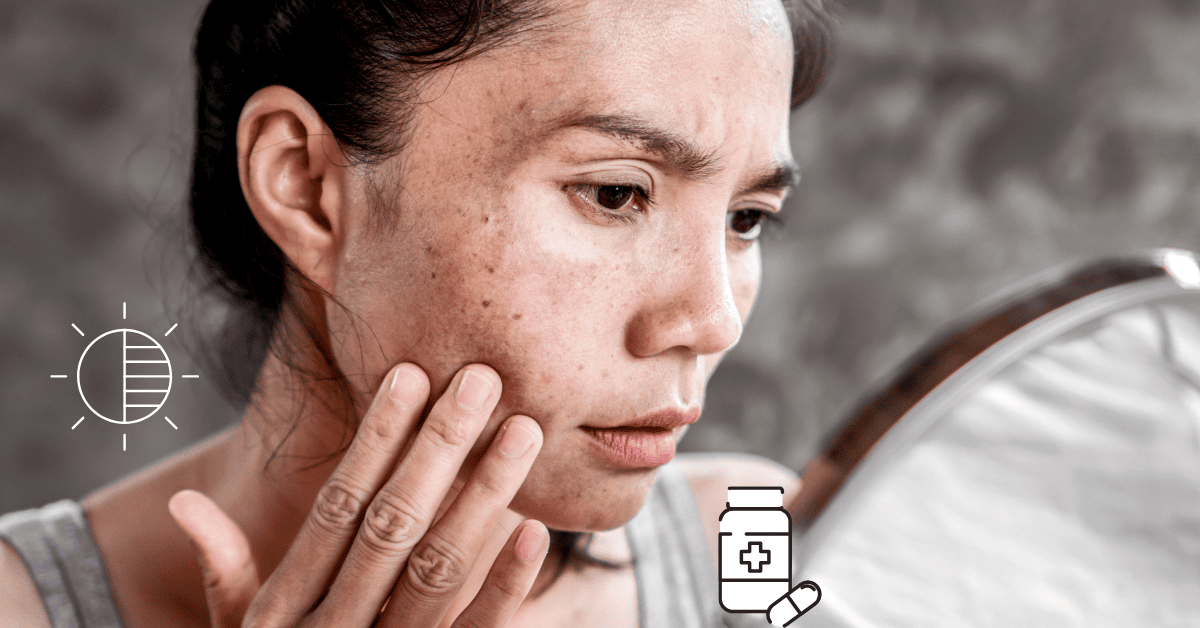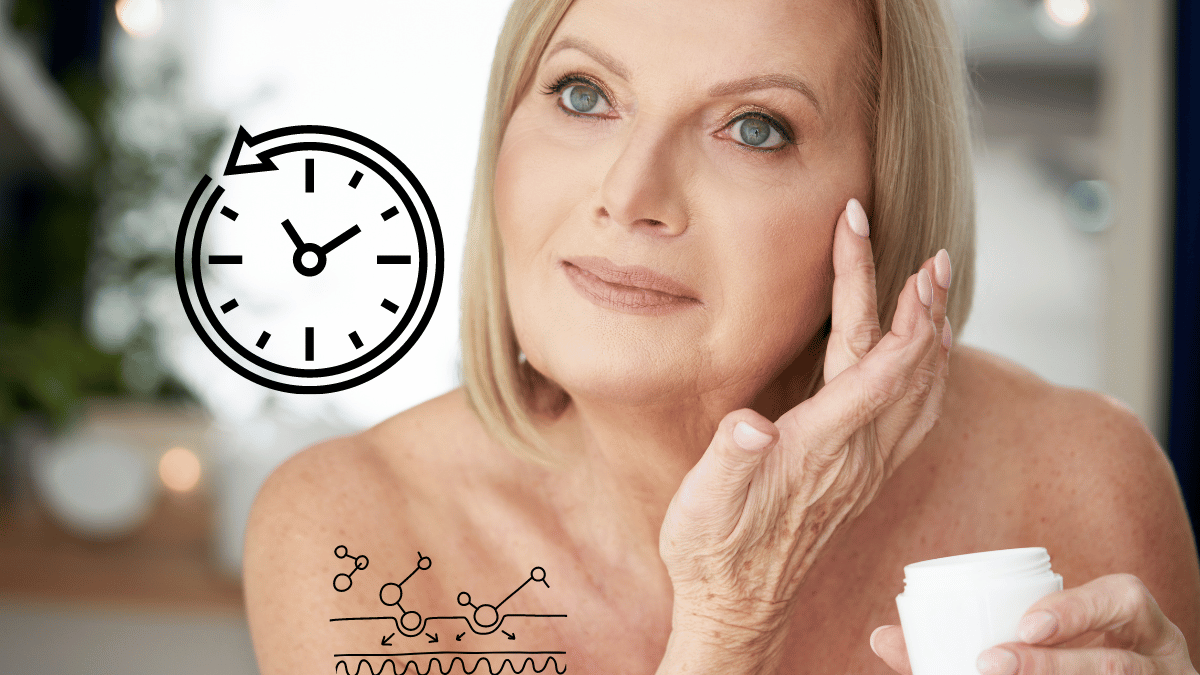What is Hyperpigmentation
Hyperpigmentation is a common skin condition that causes dark patches or spots lets know about Hyperpigmentation Treatment. It happens when the skin makes too much melanin, the pigment that gives skin its color. This can occur in small areas, like freckles, or cover larger sections, leading to noticeable discoloration.
While hyperpigmentation itself is generally harmless, it can lead to significant cosmetic concerns for many individuals, affecting self-esteem and prompting them to seek skin care treatment. The condition can manifest in various forms, including age spots, often associated with sun exposure; melasma, which is linked to hormonal changes; and post-inflammatory hyperpigmentation, which occurs after skin trauma.
Factors such as skin type, genetic predisposition, and lifestyle choices can all influence the development of hyperpigmentation, making it a multifaceted issue that requires a nuanced understanding.
Common Causes of Hyperpigmentation
Several factors contribute to the development of hyperpigmentation, beginning with sun exposure. Ultraviolet (UV) rays from the sun trigger an increase in melanin production as the skin attempts to protect itself, leading to sun spots and freckles over time.
Hormonal changes are another significant factor; conditions like pregnancy can cause melasma, often referred to as the “mask of pregnancy,” due to fluctuations in hormones like estrogen and progesterone. Additionally, post-inflammatory hyperpigmentation is commonly seen after skin injuries such as acne, burns, or cuts, where the skin darkens as it heals in response to inflammation.
Some medications, especially certain chemotherapy drugs and antimalarials, can cause increased pigmentation as a side effect. Genetics also play a role; people with a family history of hyperpigmentation are more likely to develop similar skin changes.
Moreover, skin conditions such as eczema or psoriasis can trigger pigmentation alterations due to the inflammatory processes involved. Lifestyle factors, including smoking and a poor diet, may further exacerbate the issue over time. Understanding these causes is essential for effective prevention and management of hyperpigmentation.
Top Hyperpigmentation Treatment
Hyperpigmentation can be a frustrating skin concern, but various effective treatments are available to help reduce its appearance. Understanding the different options can empower you to choose the best treatment for your needs. In this guide, we’ll explore both topical and professional treatments for hyperpigmentation, detailing their benefits and how they work.
Topical Treatments
Topical treatments are often the first choice for managing hyperpigmentation. These products, which are applied directly to the skin, can help lighten dark spots and create a more even skin tone over time.
Hydroquinone
Hydroquinone is a well-known skin-lightening agent that works by inhibiting the enzyme responsible for melanin production. Available in creams and gels, it can be highly effective in reducing dark spots associated with hyperpigmentation.
For best results, hydroquinone is typically used under the guidance of a healthcare professional, especially since prolonged use can lead to side effects like skin irritation or a condition called ochronosis, causes the skin to turn blue-black. When used correctly, hydroquinone can provide noticeable improvements in skin tone within weeks.
Retinoids
Retinoids, which are derivatives of vitamin A, are celebrated for their ability to promote cell turnover and accelerate the shedding of dead skin cells. This process helps to fade hyperpigmented areas and improve overall skin texture.
Prescription-strength retinoids tend to be more effective than over-the-counter options, making them a popular choice for treating more severe cases of hyperpigmentation. However, retinoids can cause initial skin irritation, so it’s advisable to start with a lower concentration and gradually increase usage to allow your skin to adjust.
Over time, consistent use can lead to significant improvements in skin clarity and tone.
Vitamin C
Vitamin C is a potent antioxidant that not only brightens the skin but also protects it from environmental stressors. It works by inhibiting melanin production, making it an effective treatment for hyperpigmentation.
Formulations that contain stable forms of vitamin C, such as ascorbic acid, can be found in serums and creams, making them a favorite among skincare enthusiasts. Regular application of vitamin C can lead to a noticeable reduction in dark spots and a more radiant complexion, making it a versatile addition to any skincare routine.
Professional Treatments
For individuals seeking faster or more dramatic results, professional treatments for hyperpigmentation can provide significant benefits. These procedures are performed by qualified dermatologists or licensed estheticians and often require multiple sessions for optimal results.
Chemical Peels
Chemical peels involve applying a solution to the skin that exfoliates the top layers, promoting the growth of new, healthier skin. There are various strengths of chemical peels available, from superficial to deep.
Superficial peels may require multiple sessions for noticeable effects, while deeper peels can provide immediate improvements but come with longer recovery times. Chemical peels can effectively target various types of hyperpigmentation, including sun spots and melasma, helping to rejuvenate the skin’s appearance.
Laser Therapy
Laser therapy utilizes targeted light energy to break down melanin and reduce hyperpigmented areas. Different types of lasers are designed to treat specific concerns, allowing for a tailored approach based on skin type and pigmentation severity.
Many patients notice significant improvements in skin tone after just a few laser sessions. While laser therapy can be highly effective, it may require some downtime for recovery, especially with more aggressive laser treatments. Consultation with a dermatologist can help determine the most suitable laser option for your skin.

Microdermabrasion
Microdermabrasion is a gentle procedure that exfoliates the skin using fine crystals or a diamond-tipped wand. It removes dead skin cells, boosts cell turnover, and improves skin texture, making it effective for reducing superficial hyperpigmentation.
While you may see subtle results after one session, multiple treatments can lead to noticeable improvements in skin clarity and tone. One of the great things about microdermabrasion is that it has minimal recovery time, so you can quickly return to your daily activities.
Natural Remedies for Hyperpigmentation
For those seeking gentle, non-invasive ways to address hyperpigmentation, natural remedies can be an effective option. These remedies often incorporate herbal treatments and lifestyle changes that promote skin health and help reduce dark spots over time.
Herbal Treatments
Herbal treatments have been used for centuries to address various skin concerns, including hyperpigmentation. Many herbs contain natural compounds that can brighten the skin and inhibit melanin production.
One popular option is licorice extract, which contains glabridin, a compound known for its skin-brightening properties. It can help reduce dark spots and even out skin tone by inhibiting melanin production without causing irritation. Another effective herb is turmeric, renowned for its anti-inflammatory and antioxidant properties.
Curcumin, the active ingredient in turmeric, can lighten hyperpigmentation when applied topically in a mask or mixed with other ingredients like yogurt or honey.
Aloe vera is another natural remedy that can be beneficial. It not only soothes the skin but also contains aloin, which has been shown to lighten dark spots. Regular application of aloe vera gel can help promote a more even skin tone. Additionally, green tea extract is rich in antioxidants and can help protect the skin from UV damage, potentially reducing the likelihood of hyperpigmentation.
Lifestyle Changes
Incorporating specific lifestyle changes can also significantly impact the appearance of hyperpigmentation. First and foremost, sun protection is crucial. Using a broad-spectrum sunscreen daily can prevent further darkening of existing spots and protect the skin from harmful UV rays. Wearing protective clothing and seeking shade during peak sun hours can further enhance your sun protection strategy.
Another important lifestyle change is to adopt a balanced diet rich in antioxidants. Foods high in vitamins C and E, such as citrus fruits, nuts, and leafy greens, can support skin health and help combat oxidative stress that contributes to pigmentation issues. Staying well-hydrated by drinking plenty of water can also improve skin health and maintain an even skin tone.
Additionally, managing stress through practices like yoga, meditation, or regular exercise can benefit overall skin health. High stress levels can trigger hormonal changes that may exacerbate pigmentation issues. By focusing on a holistic approach that combines herbal treatments with positive lifestyle changes, you can promote healthier skin and help reduce the appearance of hyperpigmentation naturally.
Preventing Hyperpigmentation
Preventing hyperpigmentation is often more effective than trying to treat it once it appears. By adopting proactive measures, you can protect your skin from dark spots and promote an even complexion. This section focuses on essential sun protection tips and a comprehensive skincare routine that can significantly minimize the risk of hyperpigmentation.
Sun Protection Tips
Sun exposure is one of the leading causes of hyperpigmentation, making effective sun protection crucial. First and foremost, using sunscreen daily is essential.
Opt for a broad-spectrum sunscreen with an SPF of at least 30, applying it every day, even on cloudy days or when you’re indoors, since UV rays can penetrate windows. Reapplying every two hours, or more often if you’re swimming or sweating, is vital to ensure continued protection.
In addition to sunscreen, wearing protective clothing can further shield your skin from harmful rays. Long-sleeved shirts, wide-brimmed hats, and sunglasses are great options for minimizing direct sun exposure.
Try to stay in the shade between 10 a.m. and 4 p.m. when the sun is strongest.. This time frame is when the sun’s rays are strongest and most likely to cause skin damage.
It’s also wise to avoid tanning beds, as they can contribute to skin damage and increase the risk of hyperpigmentation. If you desire a tanned appearance, consider using sunless tanning products as safer alternatives. Lastly, be mindful of any medications you may be taking; some can increase your skin’s sensitivity to sunlight, making you more prone to pigmentation issues. Consulting with your healthcare provider about potential side effects can help you stay informed.

Skincare Routine
A consistent and well-formulated skincare routine is another vital aspect of preventing hyperpigmentation. Start with gentle cleansing to remove dirt, oil, and makeup without stripping your skin of its natural moisture. Avoid harsh scrubs that can irritate the skin and exacerbate pigmentation issues.
Incorporating regular exfoliation is also beneficial, as it promotes cell turnover and prevents the buildup of dead skin cells that can lead to uneven skin tone. Consider using chemical exfoliants like AHAs (alpha hydroxy acids) or BHAs (beta hydroxy acids) a few times a week to gently slough off dead skin.
Including brightening ingredients in your routine can further enhance your skin’s appearance. Look for serums or creams that contain vitamin C, niacinamide, or licorice extract, as these can help reduce the visibility of existing dark spots and prevent new ones from forming.
Keeping your skin well-hydrated with a moisturizer suitable for your skin type is also crucial; hydrated skin is more resilient and better equipped to fend off environmental stressors.
Night care is equally important. Consider incorporating retinoids or other active ingredients into your nighttime routine to promote cell turnover and renewal. These ingredients can help fade existing hyperpigmentation while improving overall skin texture.
By implementing these sun protection strategies and maintaining a thoughtful skincare routine, you can significantly reduce your risk of developing hyperpigmentation and foster a healthy, radiant complexion.
Immediate Steps to Take for Hyperpigmentation
If you’re dealing with hyperpigmentation, there are several quick steps you can take to help manage the condition effectively. Start by protecting your skin from the sun; using a broad-spectrum sunscreen with at least SPF 30 daily is essential. Apply it generously and reapply every two hours, especially when outdoors. Wearing protective clothing, such as hats, can further shield your skin from harmful UV rays.
Avoid irritating products by steering clear of harsh scrubs or abrasive exfoliants that can worsen pigmentation issues. Instead, opt for gentle cleansers and mild exfoliants to maintain your skin’s health without causing irritation.
Incorporating brightening ingredients into your routine is also crucial. Look for over-the-counter products that contain vitamin C, niacinamide, or licorice extract, which can help lighten dark spots and promote a more even skin tone. Consistent application is key for best results.
Keeping your skin hydrated is another important step. Use a suitable moisturizer to ensure your skin stays resilient against environmental stressors that may exacerbate pigmentation.
Whenever possible, limit sun exposure by avoiding direct sunlight during peak hours from 10 a.m. to 4 p.m. If you need to be outside, seek shade and consider wearing sunglasses and a wide-brimmed hat to protect your face.
Monitor changes in your skin closely. If you notice new dark spots forming or existing spots changing in size, shape, or color, take note and plan to see a dermatologist promptly.
Lastly, if you’ve tried home remedies and over-the-counter treatments without success, don’t hesitate to consider professional advice. A dermatologist can provide personalized recommendations and advanced treatment options tailored to your needs.
I
Conclusion
Managing hyperpigmentation requires a multifaceted approach that combines prevention, effective treatments, and a commitment to healthy skin care practices. By understanding the causes of hyperpigmentation and implementing proactive measures, such as diligent sun protection and a tailored skincare routine, you can significantly reduce the risk of developing dark spots.
If you notice any sudden changes in your skin or if over-the-counter remedies aren’t yielding results, seeking the guidance of a dermatologist is essential. Professional evaluations can provide deeper insights and access to advanced treatments that may be more effective for your specific skin type and concerns.
FAQs
What is hyperpigmentation?
Hyperpigmentation is the darkening of certain areas of the skin due to excess melanin production.
What causes hyperpigmentation?
Common causes include sun exposure, hormonal changes, post-inflammatory responses, and certain medications.
How can I prevent hyperpigmentation?
Using sunscreen daily, wearing protective clothing, and maintaining a consistent skincare routine can help prevent hyperpigmentation.
Are natural remedies effective for hyperpigmentation?
Yes, herbal treatments like licorice extract and turmeric, along with lifestyle changes, can be effective for some individuals.
When should I see a dermatologist for hyperpigmentation?
Consult a dermatologist if you notice sudden changes in your skin, if over-the-counter treatments aren’t working, or if you have other concerning symptoms.



